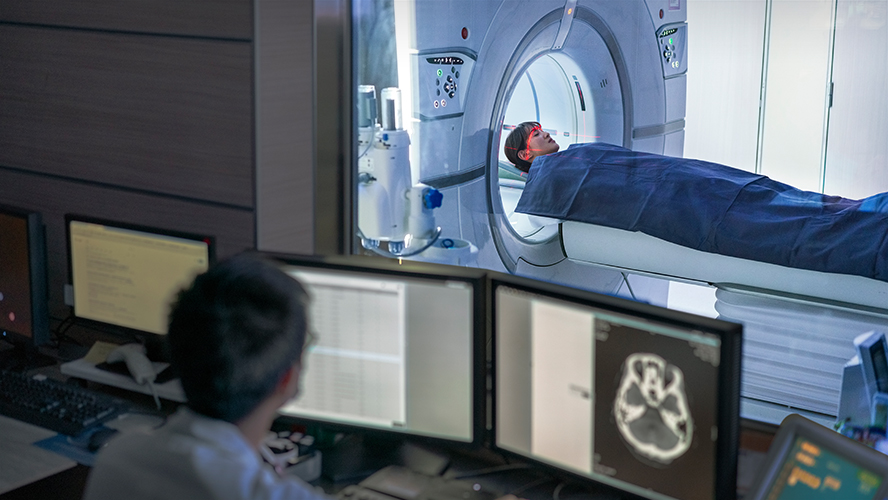
A recent study from the Krembil Brain Institute (Krembil) at UHN uncovered unique features in the brains of people with multiple sclerosis (MS) that can be used to predict chronic pain more accurately in patients.
MS is a degenerative autoimmune disease that causes the body to destroy myelin, the protective covering of cells in the nervous system. More than 50% of people with MS live with some kind of chronic pain, such as trigeminal neuralgia (TN)—an intense shooting pain in the face and neck. Despite the prevalence of chronic pain, cognitive and motor disabilities associated with MS limit the efficacy of current pain assessment methods in people with the disease.
Previous studies have found that chronic pain causes signature changes in the brain’s grey matter—a type of tissue in the brain and spinal cord—in other diseases. Researchers propose that these changes could be used to diagnose chronic pain through brain imaging. Until now, the role of these changes (called imaging predictors) had not been explored in MS.
The team, led by Senior Scientist Dr. Mojgan Hodaie, used machine learning (ML) to analyze and compare MRI scans of the brains of MS patients with and without TN, which served as a model for chronic pain. They identified 17 grey matter structures as possible imaging predictors since these structures showed distinct differences between the groups. Remarkably, these structures were such effective predictors of chronic pain that their ML model was able to identify whether a patient had chronic pain with nearly 95% accuracy by analyzing MRI scans alone.
These findings advance our understanding of how MS and TN impact the brain and provide a way to improve chronic pain diagnosis in MS patients. Because imaging predictors are not subject to the same limitations as current assessment methods (such as reliance on self-reporting), they could make the diagnostic process more objective and accurate. This research marks an important step toward improving how chronic pain is diagnosed, managed, and ultimately, alleviated in the MS community.
The first author of this study is Dr. Timur Latypov, a Postdoctoral Researcher at The Hospital for Sick Children, and former Doctoral Candidate in the Faculty of Medicine at the University of Toronto.
The senior author on this study is Dr. Mojgan Hodaie, a Senior Scientist at the Krembil Brain Institute, Affiliate Scientist at the KITE Research Institute, and Professor in the Department of Surgery at the University of Toronto.
This work was supported by the CIFAR-Temerty Innovation Catalyst Grant, University of Toronto Centre for the Study of Pain, and UHN Foundation.
Latypov TH, Wolfensohn A, Yakubov R, Li J, Srisaikaew P, Jörgens D, Jones A, Colak E, Mikulis D, Rudzicz F, Oh J, Hodaie M. Signatures of chronic pain in multiple sclerosis: a machine learning approach to investigate trigeminal neuralgia. Pain. 2024 Dec 13. doi: 10.1097/j.pain.0000000000003497.

